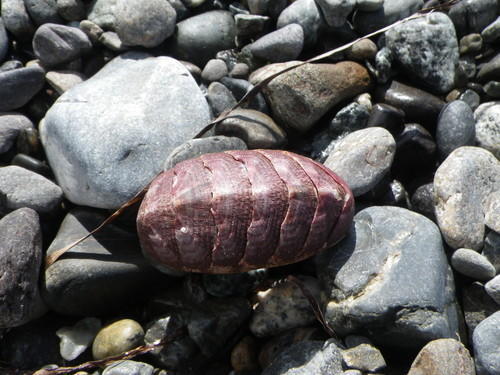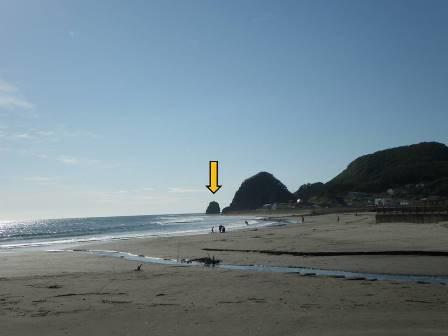Blog
2021.11.06
Rainbows and Fall Colors
On October 23rd, some visitors came to the Visitor Center and I was guiding them around the geopark. Apparently, they are touring all the geoparks in Japan. We were very lucky to encounter a rainbow while enjoying the fall foliage in Shintomi. Here are some photos.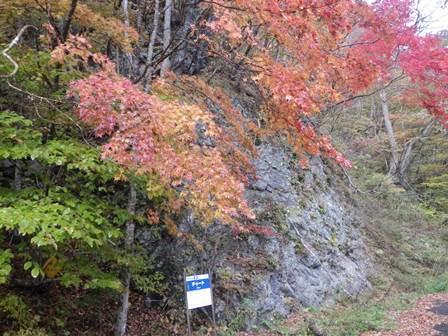
Fall colors at "Shintomi Chert" geosite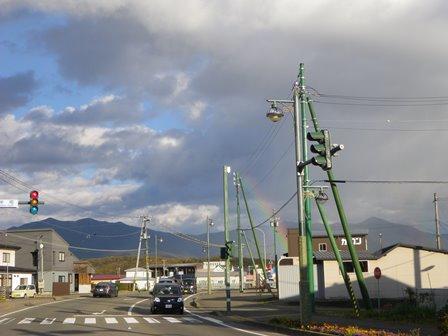
The rainbow appeared right in front of Mt. Yoshida. (Photo taken in Sakae-machi)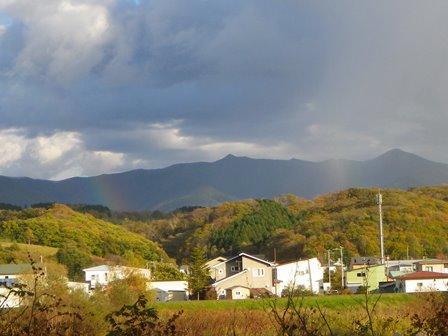
We even saw a double rainbow. The second rainbow appears between Mt. Apoi and Mt. Yoshida. (Photo taken at Sakae-machi's former quarry, facing the Apoi mountain mass)
*The order of the colors differs from the primary and secondary rainbow. The primary rainbow has red on the outside and purple on the inside while the secondary rainbow show purple on the outside and red on the inside. In other words, the colors are flipped.
*The water droplets that make up the secondary rainbow are reflected one time more than the primary rainbow and the light is flipped towards the viewer, which makes it harder to see and the colors are not as vivid.
*The space of sky between the two rainbows, so on the underside of the primary one and above the secondary one, appears darker than the surroundings. This dark area is a phenomenon called "Alexander's Band." I hope to confirm this phenomenon next time.
2021.10.22
~Frost~ Winter is Almost Here
The mountains surrounding Samani are full of autumn color, but this morning there were a few places around town that had frosted over.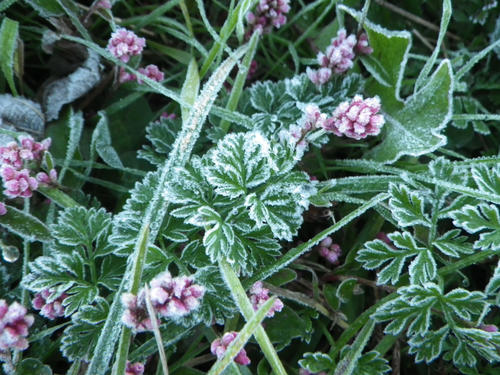
I was told that fairly soon we'll be able to see beautiful "needle ice" in the fields. I've never taken a photo of the needle ice before, so I hope I can see them soon.
Needle Ice: When the temperature reaches below freezing, the water in the ground rises and freezes in thin needle-like columns through capillary action. Needle ice is formed when water is present in the ground, which is a different phenomenon than the sublimation of water vapor in the air that causes frost.
2021.10.19
Horoman Gorge Fall Foliage Peak
I went to check out the fall foliage in Horoman Gorge on October 14th. It was perfect timing. The combination of evergreens, and red and yellow leaves mixed together was beautiful.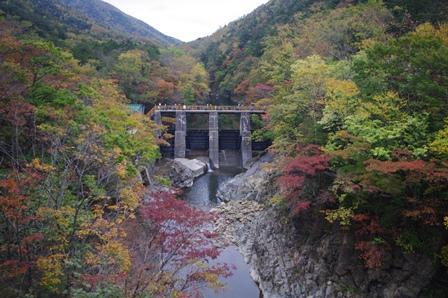 Fall colors at the 2nd Horoman River Power Plant
Fall colors at the 2nd Horoman River Power Plant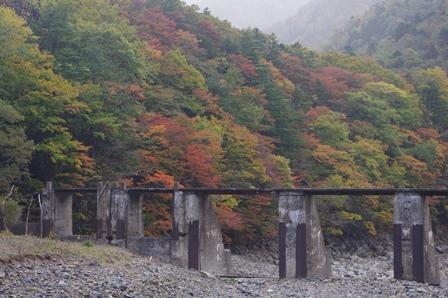 The former power plant
The former power plant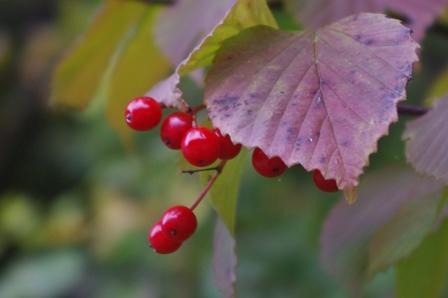 Viburnum berries
Viburnum berries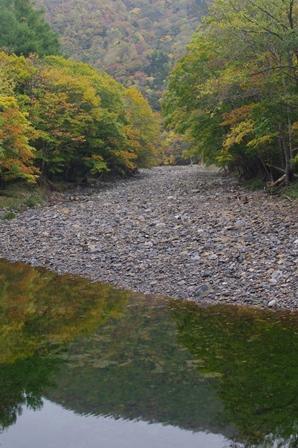 Reflected on the water
Reflected on the water
The Japanese White Pine can also be found here in the Horoman Gorge at the northmost limit of its habitat, and the Inari Shrine. Be careful while driving but definitely take some time to check out the fall colors.
2021.10.06
Changes in the Ocean
Recently the national news has been reporting on major changes in the ocean, in particular to sea urchin and salmon in the Pacific Ocean around Hokkaido so I would like to share some information about the situation here in Samani.
"Dolphin Washed Ashore"
On Sunday, September 26, 2021, on Samani's election day, the body of a dolphin was washed ashore near the Taisho Tunnel. Usually you would expect a whale, but it was no longer than 4 meters in length and definitely a dolphin. After talking with the locals, they believe it may have washed up a few days' prior as the smell from the dolphin had permeated the surrounding neighborhood.
This reminded me of two things. A Hubbs' beaked whale washed up on the shores of Samani in 2015 and 2018 and researchers came from all across Japan to study it. The second is that the Ainu people offer prayers when whales wash up on the shore, and that practice is being handed town here in Samani.
In the past it was fairly common for whales to appear on Samani shores, and the local people would gather with their kitchen knives and cooking pots in hand.
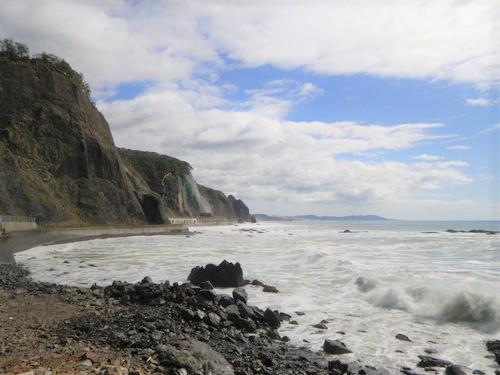 Cape Erimo/Hidaka Yabakei area. Quite a few waves on October 2nd.
Cape Erimo/Hidaka Yabakei area. Quite a few waves on October 2nd.
"Bleached Sea Urchin and Mui Washed Ashore"
Starting around September 9, 2021, there have been several news stories about dead sea urchin and mui chiton mollusks being washed ashore. There have also been stories on the news and in newspapers about dead salmon being caught in nets along Hokkaido's Pacific coast.
According to the Sept 26, 2021 Hokkaido Newspaper, the ocean water turned brownish-red mid-month, proof that a red-tide has occurred. A red-tide means that a large amount of plankton (karenia & mikimoito) is in the water. In mid-September Erimo, a neighboring town, received a large amount of rain due to a low-pressure system that moved through the area, but it's not clear if that was the cause of the red-tide.
According to the Oct 2, 2021 Hokkaido Newspaper, the Erimo Fishing Cooperative (including half of Samani) lost 1280 salmon and 10 tons of sea urchin. Hidaka Central Fishing Cooperative (including half of Samani) lost 60 salmon. This red-tide all around Hokkaido could be caused by large amount of plankton from western Japan but further observation is needed.
On October 10, 2021, we conducted a survey around the Taisho Tunnel in Samani's Fuyushima area. The coastline here had a different scent to it (most likely due to the dead sea creatures). There were many bleached sea urchins that had lost their spines (mostly Ezo bafun sea urchin), and quite a few mui chiton mollusks. Other things we noticed were intact whelk, mussels with temporary roots attached, and the roots of Hidaka kelp. This could be due to a typhoon or the rising temperatures of the ocean, and although we don't know the actual reason, for now we are documenting our findings. Local fisherman told us that similar occurrences have happened in the past and sea urchin could not be fished for several years after that.
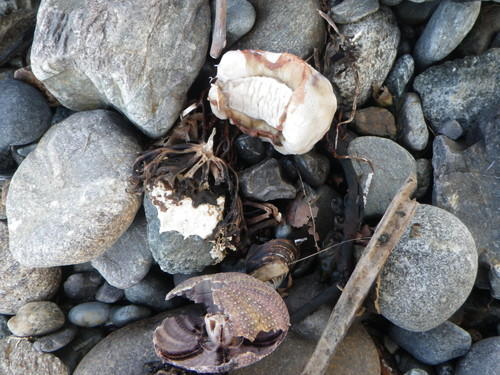 Mui (mussel), sea urchin, kelp root
Mui (mussel), sea urchin, kelp root
On Oct 2, 2021, a researcher from Shikoku came to the Mt. Apoi Geopark Visitor Center after surveying Mt. Apoi, so I asked them about the red-tide of the Seto Inland Sea. Red-tides occur frequently in the Seto Inland Sea. In particular, it affects farmed yellowtail. As a native of Shikoku, the damage caused by a red-tide in the open sea is surprising.
We are currently focusing on two different methods in order to get to the bottom of this "change in the ocean" issue. First is utilizing the Three Principal Viewpoints: bird's eye view/fish eye view/bug's eye view. This includes comparing the situation with Shikoku's, searching for the bigger picture, and documenting the current situation. Secondly, by studying the past. We are looking into Samani's past records to uncover new knowledge and viewpoints.
2021.09.21
Tip of Rosoku-iwa Crumbles
The tip of Rosoku-iwa (Candle Rock), one of the characteristic sights of Mt. Apoi Geopark and Samani, collapsed. It lost its candle-like shape!
We believed it collapsed sometime between September 18th and 20th after it rained all day on September 17th. Here is what it looks like now compared to photos from 5 years ago.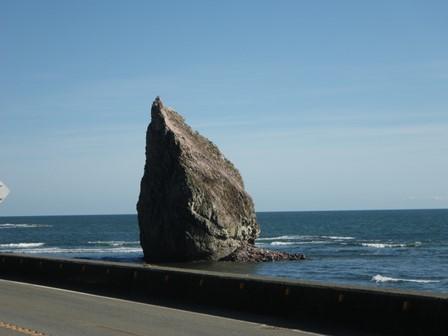
Sept 20, 2021. You can see the collapsed rubble to the bottom-right of Rosoku-iwa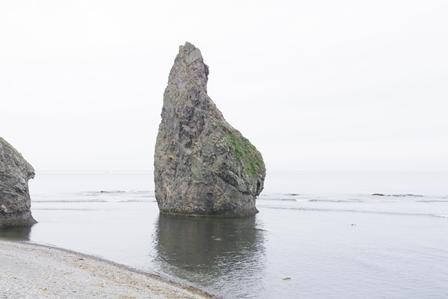
June 6, 2019
Rosoku-iwa and the Shiogama (Salt Pot) Tunnel are called "joints" which include lots of fissures in the rock and we think that the collapse happened along one of these fissures. (Rosoku-iwa is located next to Shiogama Tunnel)
I was surprised by the amount of rubble the collapse created. It's a statement to the fact that Rosoku-iwa and Oyako-iwa (Parent and Child Rocks) are large rocks formed by erosion and weathering, and also serves as a reminder to be more aware of potential landslides due to erosion.
The view of Rosoku-iwa from the Oyako-iwa Fureai Beach has changed as well. Let's look at some photos from the past.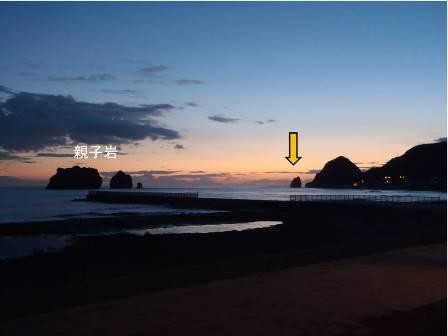
September 20, 2021
Since 2003, Rosoku-iwa and Shiogama Tunnel have had two other partial collapses:
- After the Tokachi Okichi Earthquake (Magnitude 8.0) on Sept 26, 2003, the tip of Rosoku-iwa and part of the Shiogama Tunnel (ocean-side) collapsed. (Cited: Kouhou Samani)
- In February 2019, part of the Shiogama Tunnel (ocean-side) collapsed. (Cited: Chikubetsu Kikakuten Utoma)




